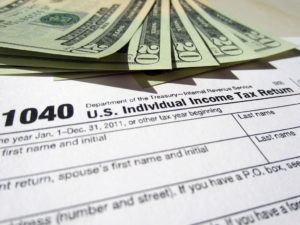 If you are hiring a nanny or other household employee, it’s important to understand your obligations as a household employer. You must file all applicable nanny tax forms, Social Security, Medicare, federal and state unemployment insurances, and income taxes. These obligations apply to all full-time and part-time employees that you expect to pay over $2,100 (2018) in the course of a calendar year.
If you are hiring a nanny or other household employee, it’s important to understand your obligations as a household employer. You must file all applicable nanny tax forms, Social Security, Medicare, federal and state unemployment insurances, and income taxes. These obligations apply to all full-time and part-time employees that you expect to pay over $2,100 (2018) in the course of a calendar year.
Some families pay their child care providers in cash or “off the books.” Although this gives the employee more income and saves families from the extra paperwork, it is illegal and can make you liable for unpaid childcare taxes, interest, and penalties. Therefore we recommend following this list created by our affiliate GTM Payroll Services to ensure you know the steps to comply with nanny tax requirements.
14 Steps to Nanny Tax Compliance
- Obtain household employer tax IDs (federal and state). In order to report childcare employment taxes and issue employee tax statements, you must obtain an employer identification number (EIN) from the IRS. Your state will require you to obtain a separate number for state unemployment insurance reporting and possibly income tax withholding reporting as well.
- File a new hire report with your state (if necessary). Generally, the information you must provide to state agencies includes the employee’s name, address, Social Security number, as well as your name, address, and federal employer identification number (EIN).
- Purchase workers’ compensation insurance (if required in your state). Workers’ compensation insurance protects both you as the household employer and your employees in case of a work-related injury or illness. See what the requirements are in your state.
- Adhere to all applicable tax, wage, and labor laws that pertain to household employment such as a Domestic Workers’ Bill of Rights. To see which laws impact household employment in your state, see our state-by-state guide.
- Verify your employee’s social security or tax identification number and complete Form I-9 for employment eligibility. Household employers must obtain a completed Form I-9 for every employee hired. This is used to verify the identity and employment eligibility of your domestic workers. Keep this form on file with copies of the documentation your employee provided for employment eligibility.
- Calculate employee tax withholdings. Your household employees’ wages fall under the Federal Insurance Contribution Act (FICA), so a portion of the wages you pay needs to be withheld and paid as Social Security and Medicare taxes. Both you and your employee are required to pay a percentage (7.65%) of the gross wages. You may pay the entire amount yourself and list the employee’s share as additional taxable gross income. The IRS, realizing that many employers will not want a large tax liability at the end of the year, strongly recommends quarterly estimated payments.
- Prepare and distribute paystubs (even if paying by direct deposit). Even though pay statement distribution isn’t required under federal law, most states have opted to pass state laws that require employers to provide regular statements about their pay and withholding. Employee name, Social Security number, pay rate, pay period, and deductions are what is generally required on the statements. Find out if your state has pay statement laws and whether pay stubs can be provided to employees electronically here.
- File and remit quarterly state employment taxes. Generally, all states require state income taxes to be paid quarterly with your state income tax department. See a list of state tax departments here.
- File and remit quarterly federal taxes using Form 1040-ES. The IRS encourages household employers to deposit federal nanny taxes four times a year using the 1040 ES form.
- Prepare and distribute Form W-2 to your employees by January 31 (for previous year’s taxes and wages). All wages and tax withholdings must be reported on your employees’ W-2 form at the end of the year. The W-2 form must be given to your employee, the IRS, and to your state.
- File Copy A of Form W-2 and Form W-3 with the Social Security Administration by January 31. See instructions on these forms here.
- Prepare Schedule H and file with your federal income tax return (Form 1040). Schedule H is filed annually and goes with step 9 on this list.
- Read and respond to government notices or alerts. When the IRS or another government agency contacts you about your household employment, it’s important to respond in a timely manner to avoid any penalties or other hassles.
- Monitor changes to tax, wage and labor laws that could potentially affect household employment. Some good websites to monitor information that could impact household employment can be found here. If your state is considering new laws like a Domestic Workers’ Bill of Rights or a paid sick leave law, make sure you stay informed on what the law entails and if it affects household employers.
The easiest way to ensure you are compliant with nanny tax laws is to have a professional service like GTM handle your household payroll. They will remove the hassles, worries, and risks of nanny tax compliance and give you peace of mind (plus more time in life for the things you enjoy).
Contact GTM for a free consultation at (800) 929-9213, or download their Complete Guide to Household Payroll for more information.
*The information contained within is designed to give the user general guidelines on the subject of household employment taxes. Tax laws can vary considerably from different taxpayers based on the circumstances and the state of residency. This information is not designed to serve as legal, accounting, or tax advice. GTM encourages you to consult with a competent tax advisor concerning specific matters before making any decisions. GTM does not accept any responsibility for positions taken by taxpayers for any interpretations on the information found within.
